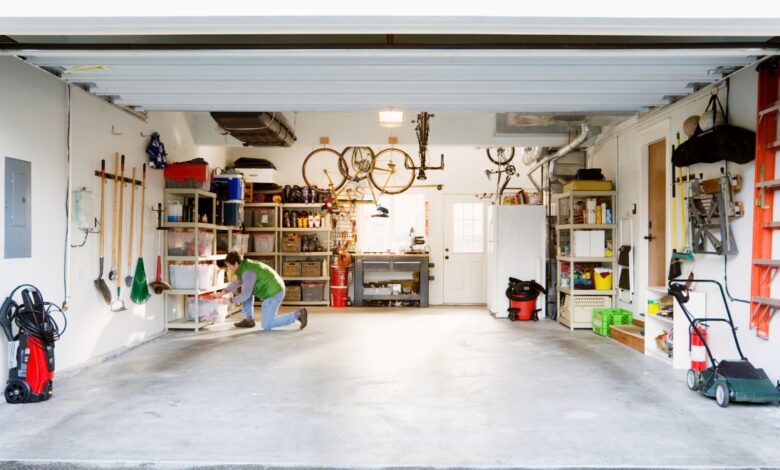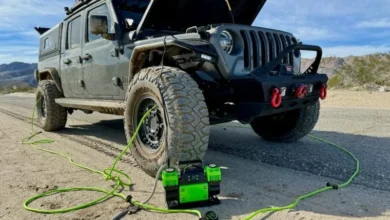What Makes a Garage Run Smooth? Tools You’ve Never Noticed

Most people think fixing a vehicle is all about getting greasy, turning wrenches, and having a big toolbox nearby. While that’s part of it, there’s actually a whole world of equipment working behind the scenes that keeps everything running smoothly. A good garage doesn’t just depend on smart mechanics—it also needs the right tools to help them do their jobs safely, quickly, and properly.
This article dives into some of the most important workshop equipment that usually gets ignored or forgotten, but without it, even basic repair work would be nearly impossible.
The Power Behind the Scenes
When someone walks into a garage, the first thing they might notice is a car up in the air. But how did it get there? That’s where lifting equipment comes in. Whether it’s a small hatchback or a giant delivery truck, vehicles need to be raised safely before work can start on the wheels, brakes, or even underneath the body.
This is where the heavy duty equipment comes in. These machines are built to handle the biggest vehicles out there—buses, trucks, and even fire engines. Instead of being fixed to one spot, they can be moved around and set up where needed. That flexibility makes them a go-to choice for modern workshops that work with large vehicles. Anyone curious about how they look or work can check out Heavy-Duty Mobile Column Lifts to see real examples.
They lift vehicles high enough for technicians to move around safely, without having to crawl on the floor. Plus, they spread the weight evenly, so there’s no wobble or tilt, which keeps both people and machines safe.
Air, Power, and Precision
Once the vehicle is lifted, the real work begins—and that means more tools jump into action. Air compressors are one of the most important machines in a garage. They power air tools that can remove bolts, spray paint, clean parts, and even inflate tires. Without them, everything would take longer and be way harder.
Then there’s the electrical side of things. Diagnostic machines are plugged into a vehicle’s system to read error codes and tell mechanics what’s wrong. These machines work fast and help avoid guessing games. It’s kind of like a doctor using a scanner instead of just guessing based on symptoms.
Together, air power and digital tools give workshops the ability to move fast without losing accuracy. And when every minute counts—especially in busy repair shops—these tools are game changers.
Keeping Things Clean and Safe
Believe it or not, keeping a garage clean is a full-time job. Tools like oil drainers, fluid extractors, and waste tanks keep spills under control and make sure nothing leaks into the ground or gets tracked around. This doesn’t just make things look better—it also keeps the workspace safe.
Slippery floors and open chemicals are bad news. So, garages rely on simple but clever tools like absorbent mats, spill kits, and ventilated cabinets to deal with all that. These tools aren’t flashy, but they make a big difference in keeping everyone healthy and the shop running without problems.
Staying Organized with Tool Storage
Imagine trying to fix a car and not being able to find a single wrench. That’s why smart storage systems are such a big part of workshop equipment. Rolling toolboxes, wall-mounted pegboards, and drawer organizers keep every tool in the right spot.
Some shops even use computer systems to track tools, especially in large garages where multiple people use the same gear. These systems help stop things from getting lost and cut down on time wasted searching around.
Tool storage doesn’t sound super exciting, but it’s one of the main reasons why busy shops don’t fall apart under pressure. Everything has a place, and that makes all the difference when things get busy.
Heavy Lifting Beyond Just Cars
While mobile lifts are great for raising vehicles, workshops often need to move heavy parts too. Engines, transmissions, and big components can weigh hundreds of kilos. That’s where engine hoists, cranes, and jacks come into play.
Engine cranes let techs lift an entire engine out of a vehicle without breaking their backs. Transmission jacks make it possible to lower gearboxes from underneath without smashing fingers or needing five people to help. It’s all about safety and speed—getting the job done without anyone getting hurt.
Digital Help Isn’t Just for the Office
In the past, garages were all about manual tools and paper checklists. But now, digital screens are popping up in lots of shops. Mechanics use tablets to track repairs, order parts, and pull up repair manuals on the spot.
There’s also software that keeps track of each vehicle’s repair history, so techs can see what’s been done before. That saves time and helps avoid repeating the same work. Some garages even use digital torque tools that record how tight each bolt is—this is super useful for safety checks and reports.
So, even though it still looks tough and dirty, modern workshops are just as smart as they are strong.
Why It All Matters
None of this equipment works alone. Everything in a workshop is part of a system—lifting tools, air compressors, diagnostics, and even the way tools are stored. When these tools work together, they make repairs faster, safer, and better. That means vehicles spend less time in the shop and more time on the road.
People usually only think about the tools they can see—like a wrench in a mechanic’s hand. But it’s the behind-the-scenes equipment that really makes the magic happen.
What To Remember
There’s a lot more to a garage than meets the eye. Every vehicle on the road depends on a team of tools and machines that keep repair shops moving smoothly. Whether it’s powerful lifts for big trucks, air tools for quick fixes, or smart tech that speeds up checks, each one plays an important part.
So next time someone talks about how garages work, don’t just think of hammers and screwdrivers. Think about all the tools quietly working in the background to get vehicles fixed and back out where they belong.




